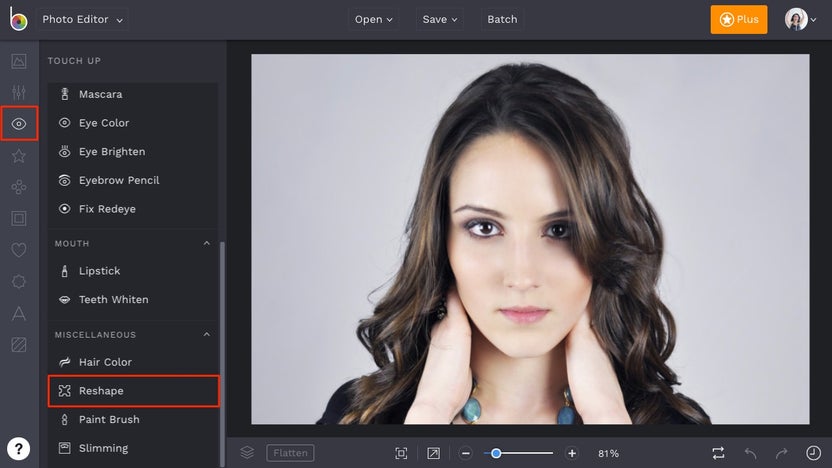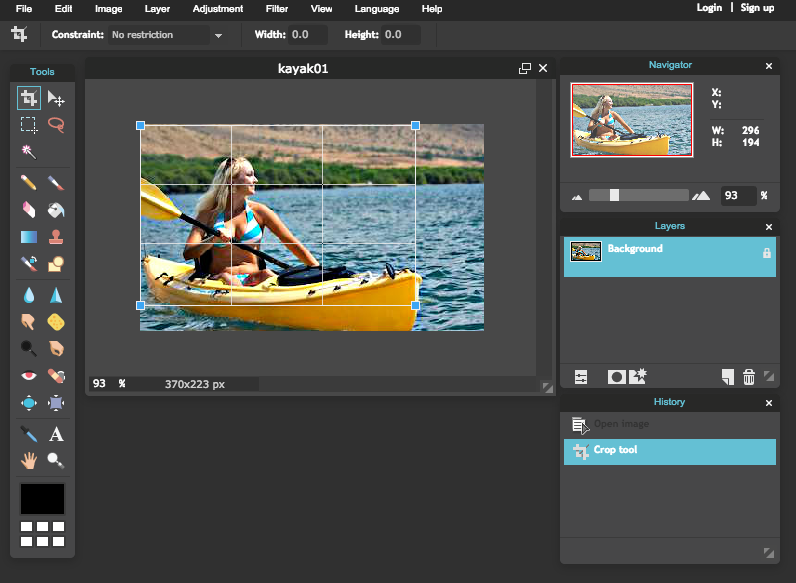If you’d like Bower Web Solutions to work with you to professionally retouch your photograph or train you how to do retouch photos using professional tools such as Photoshop please contact us. September 24, 2015 / by Tom Hart Tags: editing, photography, Piknik. Retouch your favorite shots with a full set of powerful Pixelmator tools inside your Photos app. Wipe away anything you want. Effortlessly clone areas of your image. Adjust the lightness and saturation of specific parts. Sharpen the details and soften the background, or use any of the tools together to make all of your photos picture perfect.
- How To Use The Retouch Tool In Photos For Mac
- Use The Retouch Tool In Photoshop
- How Do I Use The Retouch Tool In Mac Photos
- How To Use The Retouch Tool In Photos For Mac
What is a Clone Stamp?
Undesirable objects in the background and accidental photobombing is encountered every step of the way. With the clone stamp feature you can swiftly duplicate, replace, or remove selected areas of an image.
So, how does it work?
1. Begin by opening Pixomatic online photo editor in Chrome, Firefox, or Opera. Select the photo you want to retouch from your photo gallery.
2. Tap on the Clone Stamp tool in the left panel. Adjust the size and intensity of the brush using the sliders in the left panel.
3. Choose the segment that matches the area you wish to replace or replicate. Click the segment to make a point of reference for the cloned area.
4. Place the cursor on the area where you want the cloned pixels to be transferred.

Applications
Typical uses for Clone Stamp are covering an unsightly crack in a wall behind you or add more trees to make a rural scene. The tool is especially effective when dealing with areas of multiple colors or textures. It is also advisable to use Clone Stamp when the point of reference is similar to the area you wish to cover up, or else the clones pixels will not blend naturally. To make different textures or colors merge smoothly, you can use soft strokes and reduce the brush strength. Feel free to experiment!
Make objects disappear with Magic Brush
The Magic Brush is a part of the Heal feature pack. It allows you to remove any object or area you do not want in the shot. It is, sadly, rare to find a solitary spot in a tourist location, or a trash-free beach. With Magic Brush, all you need is a swipe to add visual balance, clarity, and make a scene aesthetically pleasing by removing unwanted objects from the photo.
Here are the steps!
1. To start, open Pixomatic online photo editor and choose the image that needs retouching.
2. Select the Heal feature in the left panel and then tap on the Magic Brush tool.
3. Next, adjust the brush size by sliding the bar on the left and highlight the object you want to disappear.
Voilà! You can now compete with your tooth fairy.
Applications
The Magic Brush is tuned to tracelessly remove items in a highlighted area not replicate a segment from a different part of the photo. The tool is mainly effective for areas with a single texture behind the plastic bag or person you want to erase. The reason for this is because the masking is based on the pixels surrounding your highlight. To make the effect look natural you can use a smaller brush size and repeat the process a couple times.
Try intricate Line Removal
Cables and power lines are a common frustration when making landscape photography. Line Removal can make the illusion of untouched nature or simply remove lines that are in the way of the focal point. The tool is a part of the Heal feature pack and is particularly useful for removing intricate details.
How is it done?
1. Open up Pixomatic online photo editor.
2. Select the image you want to edit.
3. Tap on the Heal feature on the left panel and then select Line Removal from the panel on the left.

4. Finally, click and drag along the line you want to remove
Tidy up with the Spot tool
Shirt stains may bring publicity to some celebrities but are probably best avoided for you. The Spot tool is quite self explanatory as it is named after its greatest enemy- undesirable spots, spills, and other details. In only a few steps, the tool removes highlighted areas by replacing them with surrounding pixels.
How to get spotless photos?
1. Choose your image in the Pixomatic online photo editor.
2. Select the Heal feature pack in the left panel and click the Spot tool.
3. Adjust the brush size to match the area you want to remove.

4. Finally, click on the area you want to replace. All done!
Patch an illusion
Adding a touch of creativity, visual balance and symmetry to a photo is achievable with the patch tool. The feature is essentially a merge between theClone Stamp and Magic Brushtools but with enhanced tone adjustment. It fulfills two functions, replacing areas with other parts of the photo and limitlessly replicating items. Patching does not require a concrete point of reference and allows seamless object integration. Removing, replacing, and replicating items to restructure a photo could not get any easier.
How do you patch?
Start by selecting the image you want to edit in Pixomatic online photo editor. After, click on the Patch tool in the left panel. To replace an area with a chosen spot of the photo:
1. Make sure to choose the Heal option in the toggle on the left-hand side.
2. Then, adjust the brush size with the slider and highlight the area you want to change.
3. To move the highlighted area, tap on Move and click and drag the highlight until another part of the photo is in its place.
To replicate an area from the photo:
1. Select the Clone option by clicking the toggle in the left panel.
2. Adjust the size of the brush with the slider and highlight the patch you want to replicate.
3. To reposition the cloned area, tap Move at the top panel, click the highlight and drag it to a new place.

Applications
The Patch feature is a life saver when your photo is not OCD friendly and you simply must add symmetry to the shapes in the shot. Another use is creating innovative and even futuristic edits to stand out from the crowd. The flexibility of the tool allows you to replicate an item, reposition each clone according to your taste, and remove any trace of the original.
Face Retouch
One of the common needs for photo editing is face retouch. Pixomatic provides specialized portrait editing tools that can enhance a person’s skin quality in a giffy. The features can make a two-minute selfie seem like a professionally taken photograph with adequate lighting. Some of the skin-improving tools are Blemish,Smooth Skin, and Glow. Other tools work to make you look fresh with bright eyes and a Hollywood smile. To view a detailed guide on the use of these features, please visit our video tutorial.
Blemish touch up
Naturally, skin tends to have variations in tone and texture. While it is just another part of reality and relatable for people around the globe, clear skin is preferable for most. The Blemish tool effectively removes any skin impurities with just a tap.
Here’s how it’s done!
1. Open the photo you want edited on Pixomatic online editor.
2. Click the Face feature pack on the left panel and choose theBlemish tool.
3. After, adjust the brush radius depending on the size of the acne or spots you want to remove.
4. The brush works with dotted application. Simply click on the areas you want to be replaced with the pixels around it.
Skin smoothing
You may have noticed that clear skin does not always resemble images in advertisements and magazines. Pixomatic’s Smooth tool can make skin texture and pores less visible. The feature adds a slight blur to smudge the skin tone and make the appearance of a silky surface with no bumps and creases.
What are the steps?
1. Choose the portrait you want to retouch.
2. Select the Face feature pack in the left panel and click the Smooth Skin tool.
3. Then, change the brush size and intensity with the sliders on the left for accurate retouch.
4. The last step is to click and drag the cursor over areas you want to smoothen.
Whitening
Pixomatic has two different whitening tools, specially adjusted for eyes and teeth. The difference between them is the pre-programmed tone of the lightening effect. TheWhiten tool is optimal for teeth as it does not make the smile seem unnatural. The brush edges are more smooth and the tint is milky. TheEye Whiten tool has a brighter effect and leaves an impression of freshness even if the photo was taken at 3am.
Steps to a brilliant smile
1. Open the photo you will be retouching.
2. Select the Face feature pack in the left panel and choose the Whiten or Eye Whiten tool depending on the need.
3. You can then adjust the brush radius and intensity to work with small details. For eye whitening, it is advisable to lighten just the whites of the eye as it may affect the eye color.
How To Use The Retouch Tool In Photos For Mac
There you have it!
Add a healthy glow
The Glow tool can make a fresh effect for photos shot in a dim lit setting or if the person has visibly dry skin. Professional lighting equipment are not easy to come by and restrict spontaneity. The glow effect can give the photo more dimension and even create a clearer face contour. For those unconfident in their makeup or photography techniques, the Glow feature is a quick solution.
Use The Retouch Tool In Photoshop
What are the steps?
1. Select a photo you want to retouch or continue an existing session on Pixomatic online editor.
How Do I Use The Retouch Tool In Mac Photos
2. Open the Face feature pack in the left panel and choose Glow.
3. Use the sliders on the left to alter the size and intensity of the glow which is useful when retouching different parts of the face.
How To Use The Retouch Tool In Photos For Mac
4. Finally, click and drag on the areas you want to lighten.